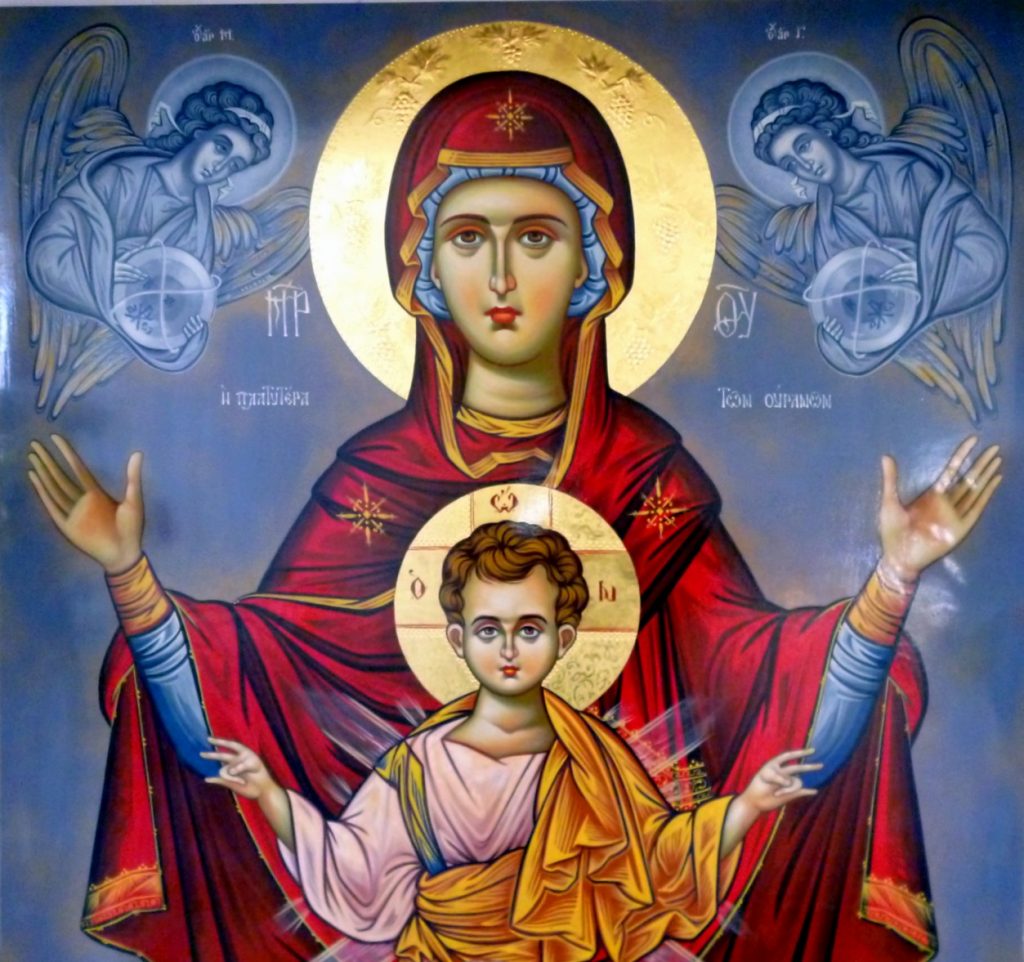Summary: Christians disagree on this question. Some Christians (Evangelicals) believe that yes, Mary had other children after Jesus was born. Others (Catholics, Orthodox) believe that Mary had only one child (Jesus) and did not in fact have marital relations with Joseph. The early Protestants (Luther, Calvin) also believed that Mary never had other children after Jesus was born. This article discusses why Christians disagree on what seems to be a simple question.
It seems like a simple and basic question: “Did Mary have other children?” It is almost the same question as “Did Jesus have uterine brothers and sisters?”
For many Christians, the answer is obvious, because there are several references to people called “brother(s)” and “sisters” of Jesus, for instance in Mark 6:3:
KJV Mark 6:3 Is not this the carpenter, the son of Mary, the brother (Greek: adelphoi) of James, and Joses, and of Juda, and Simon? and are not his sisters here with us? And they were offended at him.
This verse seems to settle things for many readers of the Bible: Jesus did have brothers and sisters, which means that Mary had other children after Jesus was born. Some also point to Matthew 1:25 which reads:
KJV Matthew 1:25 And [Joseph] knew her not till she had brought forth her firstborn son: and he called his name JESUS.
This seems so plain, in the English translation at least, that many Christians (mostly Evangelicals) wonder who in his or her right mind who would want to dispute this.
However, Orthodox and Catholic Christians strongly disagree. They point out to many verses supporting the opposite viewpoint, and insist that the Greek word “adelphos / adelphoi / adelphe” cannot mean “uterine half-sibling” as some Christians insist. In fact, they can point out (truthfully) that the Greek word “adelphos / adelphoi / adelphe” never means “uterine half-sibling” in the Old Testament, and that one has to look at all the Biblical data (regarding Joseph, James, etc) as well as the witness of the Early Church to properly identify who these people really were.
In the end, there are 3 views on the question:
– The Helvidian view (that Mary did have other children after Jesus, with Joseph) is held by most Protestants and Evangelicals
– The Hieronymian view (named after St Jerome), that the “adelphoi” were cousins of Jesus is held by most Roman Catholics
– The Epiphanian view (named after St Epiphanius, that these “adelphoi” were paternal (adoptive) half-siblings of Jesus (born of Joseph before he was engaged to Mary) is the view held by the Orthodox Church.
Note: For a detailed study, a recent discussion of the question is the book “Aiparthenos | Ever-Virgin? Understanding the Orthodox Catholic Doctrine of the Perpetual Virginity of Mary, the Mother of Jesus, and the Identity of James and the Brothers and Sisters of the Lord”
In this book, 15 little known arguments are presented in favor of the traditional (most ancient) view that Mary only had one son: Jesus (and also that Joseph was an older man and widower). Here is the list of arguments in favor of the traditional Epiphanian view in bullet form:
- Only Jesus is called son of Mary (indeed, the son of Mary); no one else
- The first time that the New Testament uses the word adelphoi (“brothers”) is actually means uncles and close relatives, not full brothers in the English sense of brothers
- The Eastern Orthodox view is the view taught by all the Christian writers of the first 4 centuries who who wrote about it (except for Tertullian who also left the Church)
- There are no instances of adelphoi meaning half-brothers on the mother’s side in the entire Old Testament (Greek Septuagint), only as full siblings or half-siblings with the same father
- The entrusting for Mary to John at the cross implies that there were no other children to take care of the mother
- Mary’s piercing of the soul indicates the greatest sorrow expressed in the Old Testament, which is the loss of an only child
- The age difference between between Jesus and his adelphos James goes in the sense of James being older rather than younger than Jesus
- “Firstborn” applied to Jesus is a reference to his status as the one who opens the womb in the Law of Moses, not to the existence of future other siblings
- “Until she gave birth” in Matthew 1:25 has to do with Matthew’s careful application of the prophecy of Isaiah 7:14, not to the future (at least 40 days later) possible reversal of the chaste relationship between Mary and Joseph
- The fact that Joseph was obviously dead by the time Jesus was baptized supports the ancient tradition that he was an older man (at least in his 50s) by the time he took Mary as wife
- Mary’s exclamation “how could this be” only makes sense in the context of a young woman having made a vow (Numbers 30-31) of virginity
- The prophecy of Zechariah 12 announces one mourning an only son
- The unique miracle of the raising of the only son of the widow of Nain makes the most sense if Mary was also a widow with an only son (Jesus)
- The typology of Mary as Ark of the New Covenant in Luke 1 also implies that no man would ever be allowed to touch her
- The typology of Mary as the New Eve so strongly taught by the second century writers Justin and Ireneaeus also implies that Mary (unlike Eve) maintained her virginity
- St Paul discussion of betrothed couples remaining continent makes sense if Mary and Joseph were the model of this type of relationship, keeping in mind that the Bible called her only betrothed even after her marriage to Joseph.
- The great scholar Richard Bauchkham (Protestant), an expert on the identity of the “brother of the Lord” supports the traditional Epiphanian view and notes that Jesus being called “the son of Mary” in Mark is what is called a metronymic name, which in the Bible distinguished a son born of a particular women by contrast of other children born (or adopted) by the same father but from a different woman.
An interesting and unusual Protestant perspective can be found here: http://www.aleteia.org/en/religion/article/a-protestant-defense-of-marys-perpetual-virginity-4803001
For a radio debate on this topic, please visit http://www.theopologetics.com/2015/01/31/episode-119-sing-we-the-virgin-mary/







